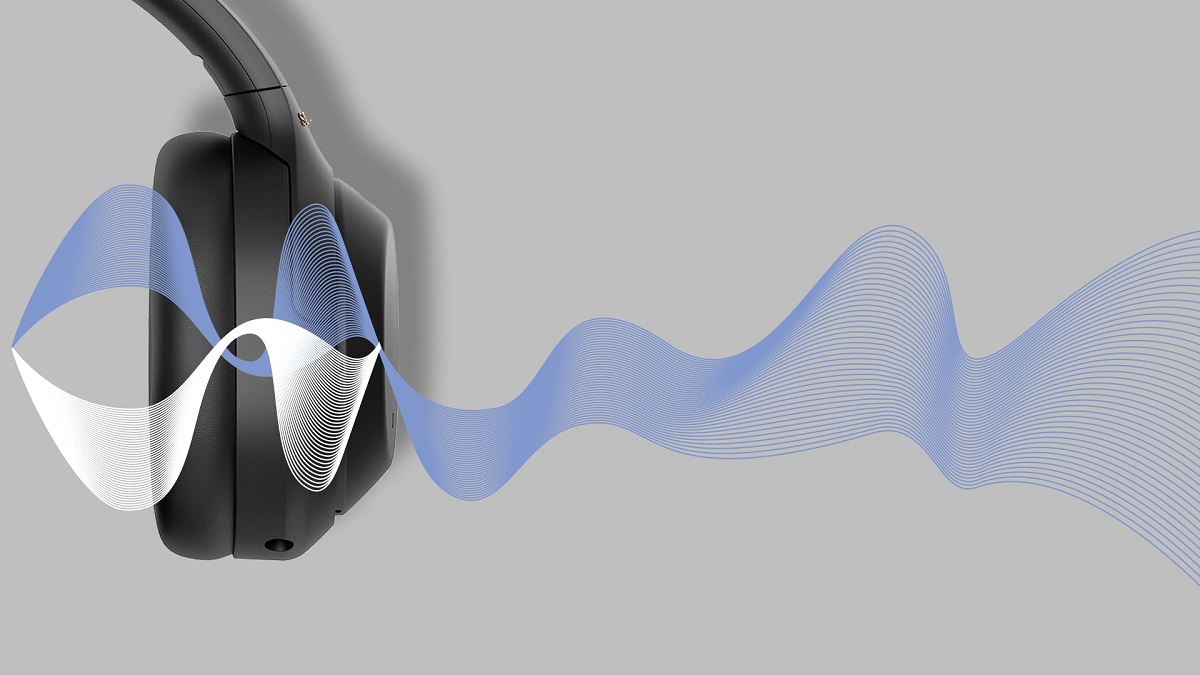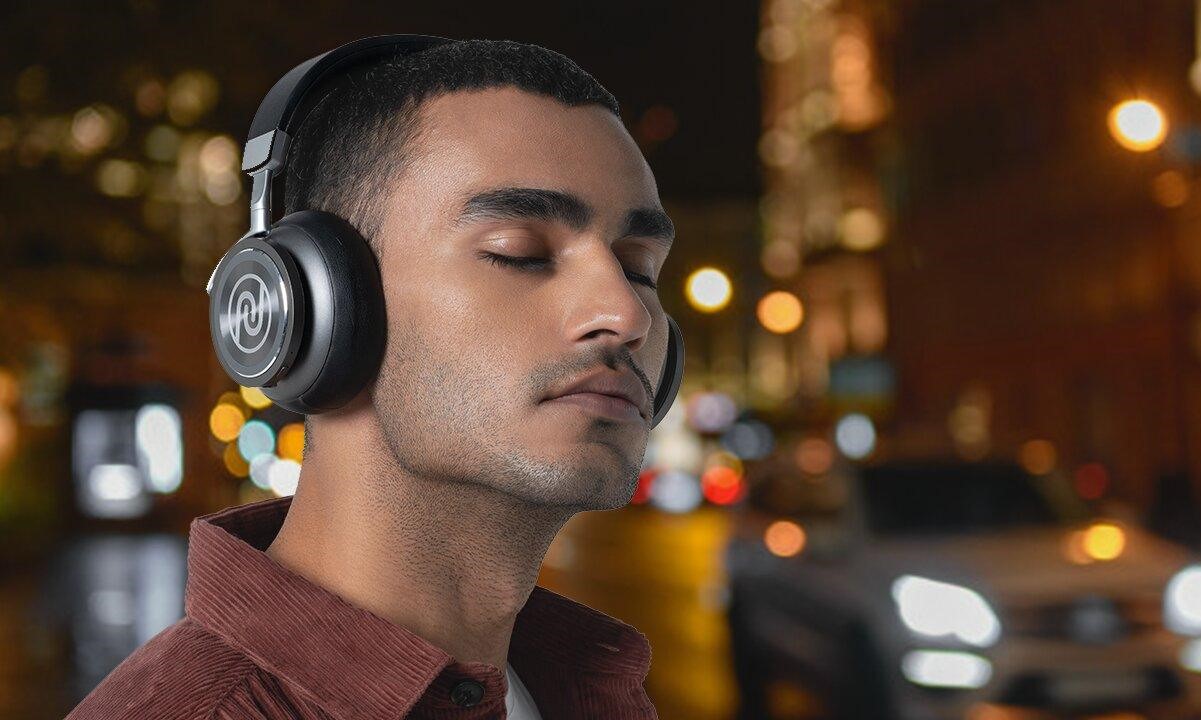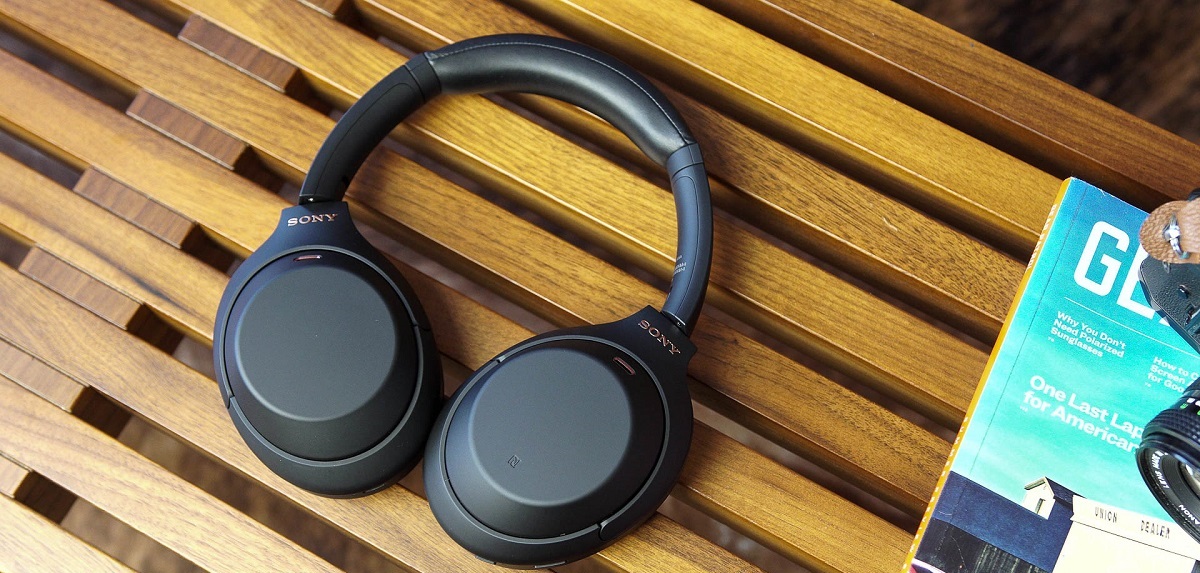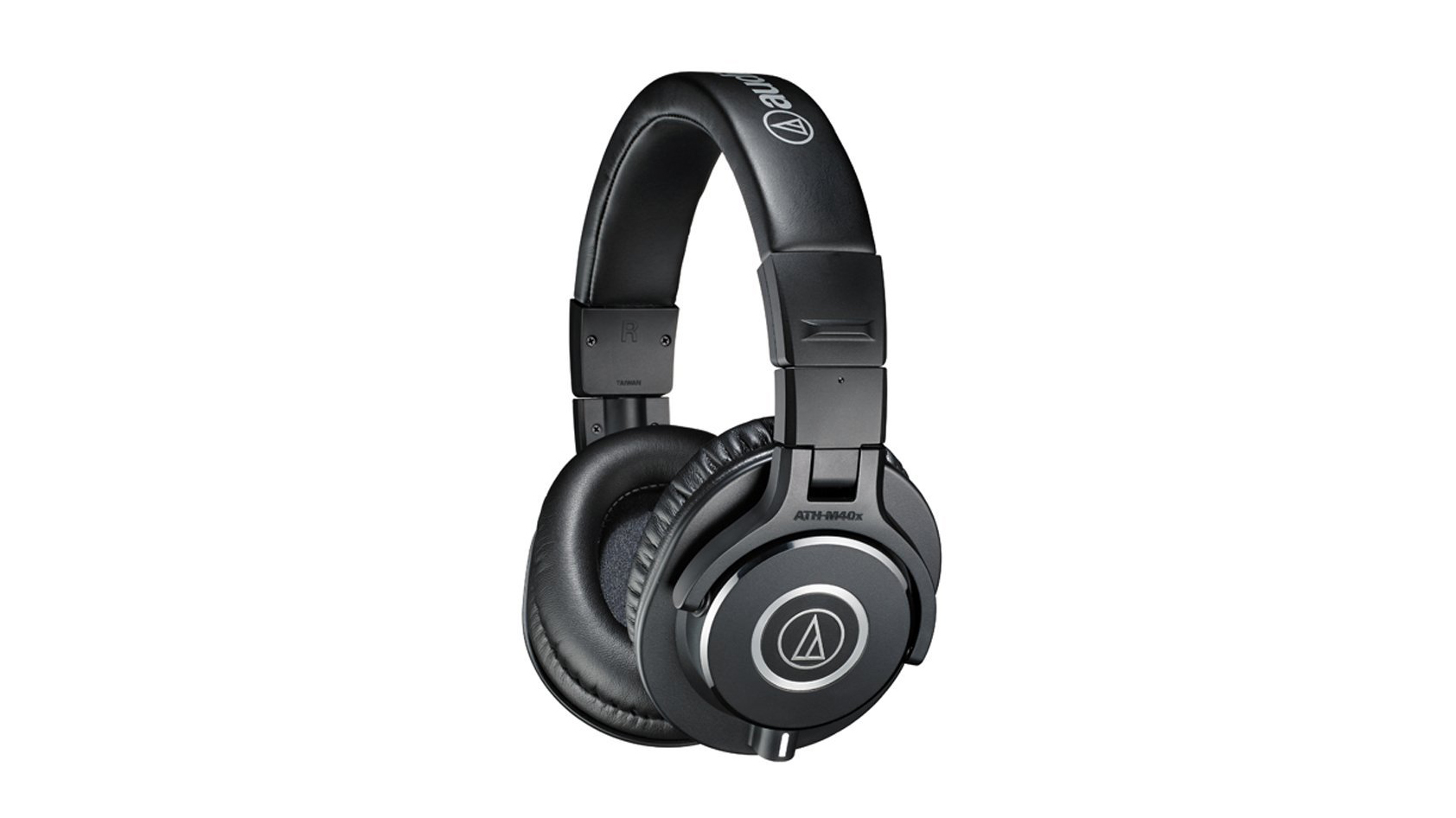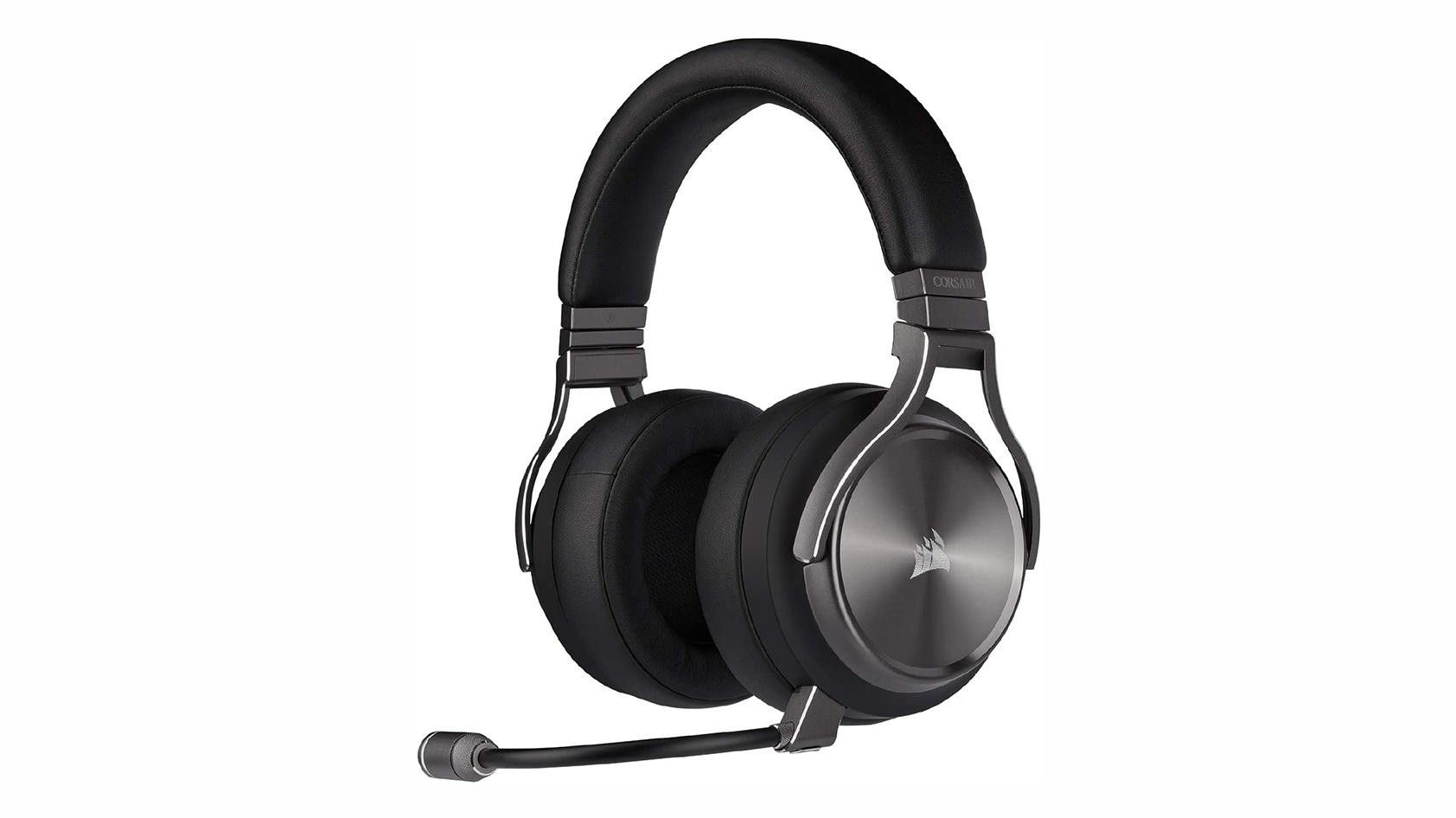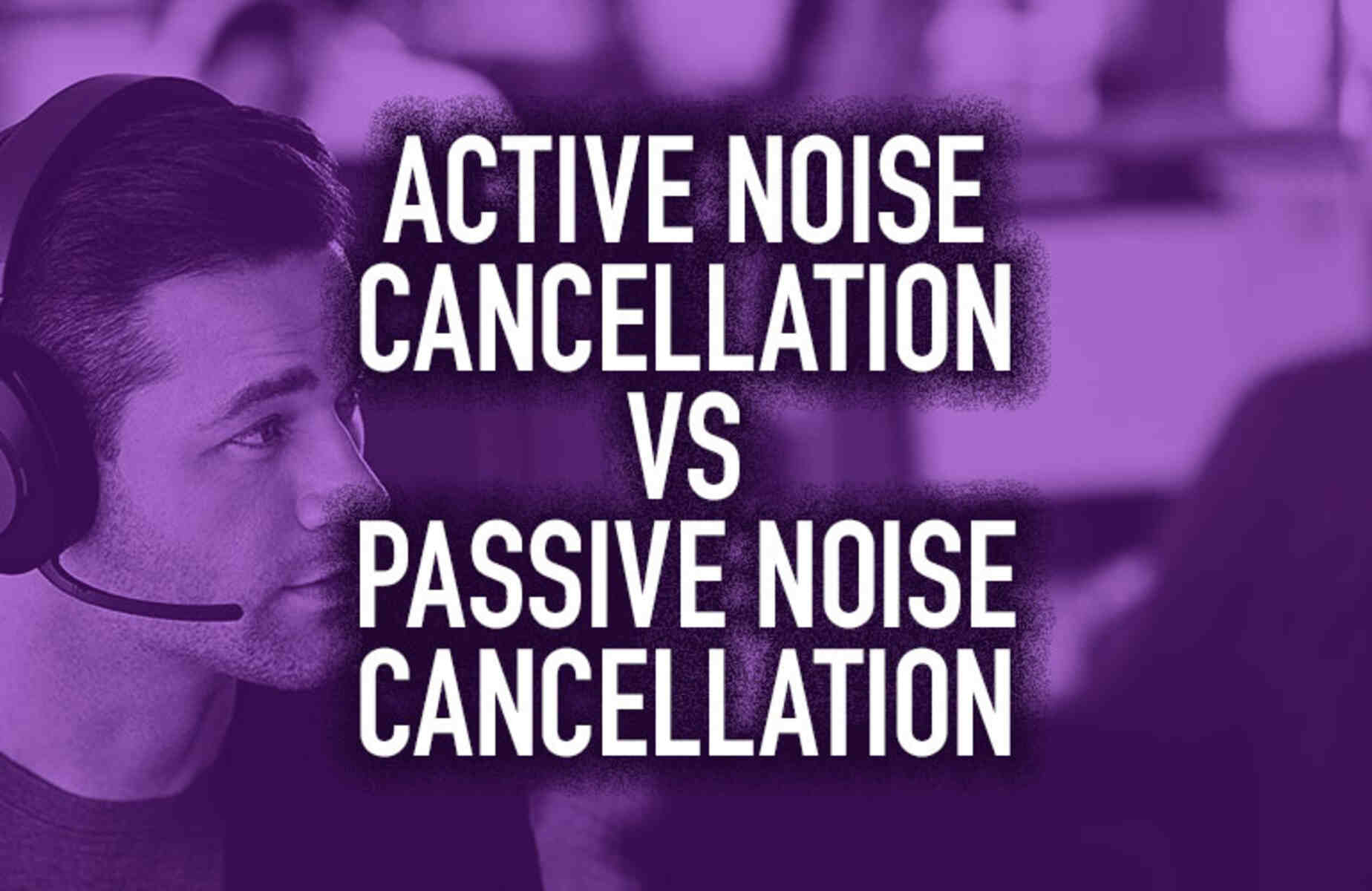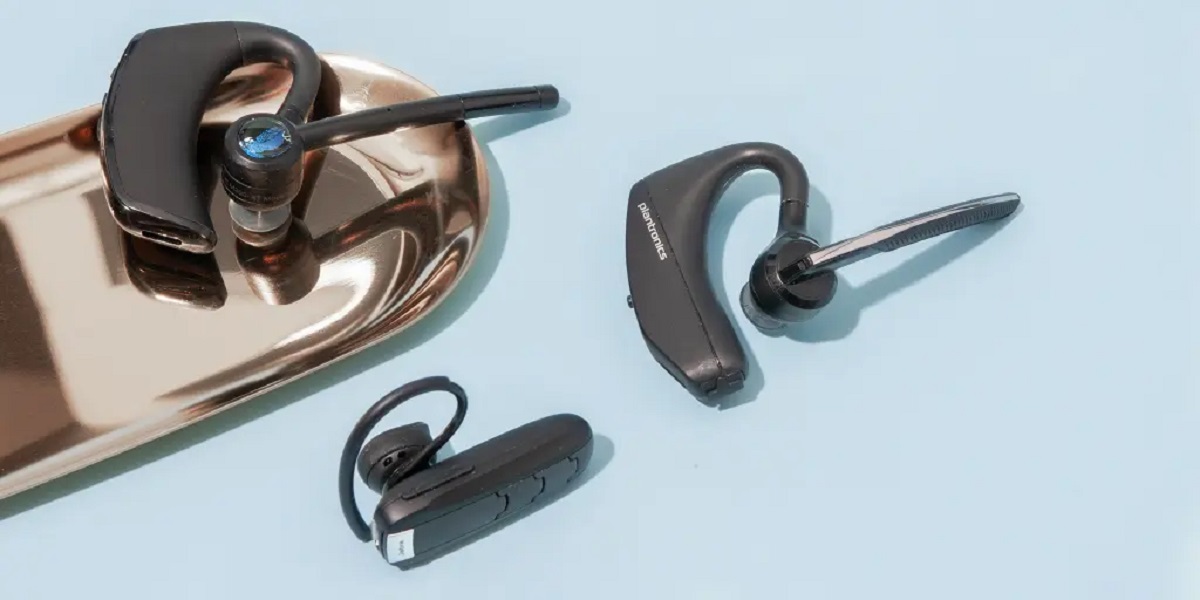Introduction
In the bustling modern world, noise has become an omnipresent companion, infiltrating our daily lives in various forms. Whether it's the cacophony of a busy office, the drone of an airplane engine, or the clamor of a crowded city street, excessive noise can be a relentless source of distraction and discomfort. Fortunately, advancements in technology have birthed a remarkable solution in the form of noise-cancelling headsets.
These innovative gadgets have revolutionized the way we experience sound, offering a sanctuary of tranquility amidst the chaos of our surroundings. By leveraging sophisticated engineering and cutting-edge algorithms, noise-cancelling headsets have the power to transform any environment into a haven of serenity, allowing users to immerse themselves in their chosen audio content without the disruptive interference of external noise.
The concept of noise cancellation is nothing short of extraordinary. It's not merely about drowning out noise with louder sounds; rather, it involves a complex interplay of physics and digital signal processing to neutralize unwanted sounds. The result is an immersive auditory experience that transcends the boundaries of traditional audio consumption.
In this comprehensive guide, we will delve into the intricate workings of noise-cancelling technology, explore the different types of noise-cancelling headsets available, and uncover the myriad benefits and limitations associated with these devices. Additionally, we will provide valuable insights on how to select the ideal noise-cancelling headset that aligns with your specific needs and preferences.
Join us on this enlightening journey as we demystify the realm of noise cancellation, unraveling the mysteries behind these remarkable headsets and empowering you to make informed decisions when it comes to enhancing your audio experiences. So, buckle up and prepare to embark on an enlightening exploration of the captivating world of noise-cancelling headsets.
How Noise Cancelling Technology Works
Noise cancelling technology operates on the principle of actively reducing or eliminating external sounds to provide a more immersive and undisturbed audio experience. This innovative technology is particularly effective in mitigating low-frequency noises, such as the hum of airplane engines, the rumble of trains, or the drone of air conditioning units. The process involves a sophisticated interplay of hardware and software, designed to counteract ambient noise and deliver a pristine auditory environment.
Active Noise Cancellation (ANC)
At the core of noise cancelling technology lies a concept known as active noise cancellation (ANC). This method involves the use of microphones strategically positioned on the headset to detect ambient sounds. Once these external noises are captured, the headset's internal circuitry generates anti-noise signals that are precisely out of phase with the detected sounds. When these anti-noise signals are combined with the original ambient sounds, they effectively cancel each other out, resulting in a perceptible reduction in overall noise levels.
Digital Signal Processing (DSP)
The effectiveness of noise cancellation is further amplified by the integration of advanced digital signal processing (DSP) algorithms. These algorithms analyze the incoming audio signals and determine the appropriate anti-noise signals required to counteract the detected external sounds. By continuously adjusting and fine-tuning the anti-noise signals in real-time, DSP ensures that the noise cancelling headset can adapt to dynamic environments, delivering consistent and reliable performance across various noise profiles.
Passive Noise Isolation
In addition to active noise cancellation, many noise-cancelling headsets also incorporate passive noise isolation features. This involves the use of physical barriers, such as cushioned ear cups or in-ear tips, to create a seal around the ears, effectively blocking out a significant portion of external noise. When combined with active noise cancellation, passive noise isolation enhances the overall effectiveness of the headset, resulting in a more comprehensive and immersive audio experience.
By seamlessly integrating active noise cancellation, digital signal processing, and passive noise isolation, noise-cancelling headsets have redefined the way we engage with audio content, offering a sanctuary of tranquility amidst the tumult of our surroundings. This sophisticated technology has transcended the realms of conventional audio consumption, empowering users to immerse themselves in their chosen audio experiences with unparalleled clarity and serenity.
Types of Noise Cancelling Headsets
When it comes to noise-cancelling headsets, there are two primary types that cater to different preferences and usage scenarios: over-ear and in-ear.
Over-Ear Noise Cancelling Headsets
Over-ear noise-cancelling headsets, also known as circumaural headphones, feature ear cups that fully enclose the ears. These headsets are designed to provide a comfortable and immersive listening experience by creating a seal around the ears, effectively minimizing external noise. Over-ear designs are favored by individuals seeking extended comfort during long listening sessions, as the cushioned ear cups distribute pressure evenly around the ears, reducing fatigue and enhancing overall wearability. Additionally, the larger form factor of over-ear headsets allows for the integration of larger drivers and more robust noise-cancelling circuitry, resulting in superior sound quality and noise reduction capabilities.
In-Ear Noise Cancelling Headsets
In contrast, in-ear noise-cancelling headsets, also referred to as earbuds or in-ear monitors, are compact and lightweight, fitting snugly into the ear canal. These headsets offer a portable and discreet solution for noise cancellation, making them ideal for on-the-go use. Despite their diminutive size, modern in-ear noise-cancelling headsets boast impressive noise isolation properties, effectively blocking out external sounds while delivering high-quality audio. The snug fit of in-ear headsets also contributes to their stability during physical activities, making them a popular choice among fitness enthusiasts and commuters.
Wireless Noise Cancelling Headsets
In addition to the distinction between over-ear and in-ear designs, noise-cancelling headsets are also available in wireless variants. Wireless noise-cancelling headsets leverage Bluetooth technology to provide seamless connectivity with a wide range of devices, offering freedom of movement without the constraints of traditional wired connections. This wireless functionality is particularly advantageous for individuals who prioritize mobility and convenience, allowing them to enjoy their favorite audio content without being tethered to their playback devices.
Hybrid Noise Cancelling Headsets
Furthermore, hybrid noise-cancelling headsets combine the benefits of both over-ear and in-ear designs, offering a versatile and adaptable solution for diverse usage scenarios. These headsets feature modular components that enable users to switch between over-ear and in-ear configurations based on their preferences and situational requirements. This innovative approach provides users with the flexibility to customize their listening experience, catering to varying comfort preferences and environmental demands.
In essence, the diverse array of noise-cancelling headsets available in the market ensures that individuals can find a solution that aligns with their specific needs, whether it's prioritizing comfort, portability, wireless connectivity, or a combination of these attributes. By understanding the unique characteristics of each headset type, consumers can make informed decisions that enhance their audio experiences and seamlessly integrate noise cancellation into their daily routines.
Benefits of Noise Cancelling Headsets
Noise-cancelling headsets offer a plethora of advantages that elevate the audio experience and enrich the daily lives of users. Here are the key benefits of integrating noise-cancelling technology into your audio repertoire:
Immersive Audio Experience
By neutralizing external distractions, noise-cancelling headsets create an immersive auditory environment that allows users to fully immerse themselves in their chosen audio content. Whether it's enjoying music, podcasts, or audiobooks, the absence of disruptive ambient noise enhances the clarity and richness of the audio, enabling users to savor every nuance and detail without interference.
Enhanced Focus and Productivity
In bustling environments such as open offices or public transportation, noise-cancelling headsets serve as a shield against the cacophony of surrounding activities. This fosters a conducive atmosphere for concentration, enabling individuals to focus on tasks, boost productivity, and engage in deep work without succumbing to the distractions of the outside world.
Reduced Listening Fatigue
Traditional headphones often necessitate higher volume levels to compensate for ambient noise, leading to listening fatigue and potential long-term hearing damage. With noise-cancelling headsets, the need for elevated volume is mitigated, as external noise is effectively suppressed. This reduction in overall sound exposure contributes to a more comfortable and sustainable listening experience, promoting auditory health and well-being.
Travel Comfort and Serenity
For frequent travelers, noise-cancelling headsets are a game-changer, offering respite from the relentless hum of airplane engines and the clamor of bustling terminals. By creating a tranquil auditory oasis, these headsets transform long journeys into serene and enjoyable experiences, allowing travelers to unwind, relax, and arrive at their destinations feeling refreshed and rejuvenated.
Versatile Usage Scenarios
Whether it's tuning out the din of a busy café, immersing in a gaming session, or indulging in a movie marathon, noise-cancelling headsets adapt seamlessly to diverse usage scenarios. The ability to tailor the auditory environment to specific activities empowers users to curate their ideal soundscapes, amplifying the enjoyment and engagement derived from their chosen audio content.
Social Etiquette and Privacy
In shared spaces, noise-cancelling headsets afford individuals the courtesy of privacy and discretion. By minimizing sound leakage and effectively blocking external noise, these headsets enable users to enjoy their audio without disturbing others, fostering harmonious coexistence in communal settings.
In summary, noise-cancelling headsets transcend the realm of mere audio accessories, offering a multifaceted suite of benefits that elevate the way we perceive and interact with sound. From fostering concentration and productivity to enhancing travel comfort and promoting auditory well-being, these headsets are indispensable companions for modern-day audio enthusiasts and professionals alike.
Limitations of Noise Cancelling Technology
While noise-cancelling technology is undoubtedly a groundbreaking innovation in the realm of audio experiences, it is essential to acknowledge its inherent limitations. Understanding these constraints empowers consumers to make informed decisions and manage their expectations when incorporating noise-cancelling headsets into their daily routines.
Ineffectiveness Against Sudden, Impulsive Sounds
One of the primary limitations of noise-cancelling technology is its reduced efficacy in dealing with sudden, impulsive sounds. While these headsets excel at neutralizing steady, low-frequency noises such as the hum of engines or the drone of air conditioning units, they may struggle to address abrupt sounds like a door slamming or a loud, unexpected shout. This is due to the inherent delay in processing and generating anti-noise signals, which renders the technology less effective in mitigating transient disturbances.
Sound Quality and Artifacts
Another consideration pertains to the potential impact on sound quality and the introduction of artifacts. The active processing involved in generating anti-noise signals can, in some instances, lead to subtle alterations in the audio output. While modern noise-cancelling algorithms strive to minimize these effects, discerning listeners may notice slight changes in the tonal balance or spatial characteristics of the sound. Additionally, the presence of artifacts, such as faint hissing or pulsing sounds, may be perceptible during periods of low audio activity, albeit to varying degrees across different headset models.
Dependency on Power Source
Noise-cancelling headsets rely on internal power sources, typically in the form of rechargeable batteries, to sustain their active noise cancellation capabilities. Consequently, the functionality of these headsets is contingent upon the availability of power. In scenarios where the battery is depleted or the headset is powered off, the noise-cancelling feature becomes inactive, reverting the device to a standard audio playback mode. This dependency on power necessitates proactive battery management and introduces the potential inconvenience of being unable to utilize noise cancellation when the power source is unavailable.
Price and Accessibility
Furthermore, noise-cancelling headsets often command a premium price point compared to their non-noise-cancelling counterparts. This pricing disparity may pose a barrier to accessibility for individuals seeking to experience the benefits of noise cancellation without incurring significant financial expenditure. Additionally, the availability of noise-cancelling headsets in certain regions or markets may be limited, further influencing the accessibility of these devices to a global audience.
Environmental Considerations
From an environmental standpoint, the manufacturing and disposal of noise-cancelling headsets raise sustainability concerns. The integration of complex electronics and rechargeable batteries in these devices contributes to their environmental footprint, necessitating responsible recycling and disposal practices to mitigate potential ecological impact.
In essence, while noise-cancelling technology offers a myriad of advantages, it is imperative to recognize the aforementioned limitations and consider them in the context of individual preferences and usage scenarios. By embracing a nuanced understanding of these constraints, consumers can make informed decisions that align with their specific needs and expectations, ensuring a harmonious integration of noise-cancelling headsets into their audio experiences.
Tips for Choosing the Right Noise Cancelling Headset
When embarking on the journey to select the ideal noise-cancelling headset, several factors warrant careful consideration to ensure a seamless integration of this transformative technology into your audio experiences. Here are essential tips to guide you in choosing the right noise-cancelling headset:
Consider Your Usage Scenarios
Begin by evaluating the primary contexts in which you intend to use the noise-cancelling headset. Whether it's for immersive music listening, productive work sessions in bustling environments, or seamless communication during travel, understanding your usage scenarios will inform the specific features and design elements that align with your needs.
Assess Comfort and Fit
Comfort is paramount when selecting a noise-cancelling headset, especially for extended usage periods. Consider the ergonomics of the headset, the quality of cushioning in over-ear designs, and the stability and snugness of in-ear options. A well-fitted and comfortable headset enhances wearability and ensures a pleasurable listening experience.
Evaluate Noise Cancellation Performance
Prioritize the noise cancellation capabilities of the headset, assessing its effectiveness in attenuating external sounds across various frequencies and environments. Look for headsets that offer adjustable noise cancellation levels or ambient sound modes, providing flexibility to tailor the auditory experience to different settings.
Battery Life and Power Management
Given the reliance of noise-cancelling headsets on internal power sources, such as rechargeable batteries, it's crucial to consider the battery life and power management features. Opt for headsets with extended battery longevity and efficient power-saving mechanisms to mitigate the inconvenience of frequent recharging.
Audio Quality and Versatility
While noise cancellation is a pivotal feature, it's equally essential to prioritize the audio quality and versatility of the headset. Assess the fidelity of the sound output, the presence of customizable equalization settings, and compatibility with a diverse range of audio sources to ensure a captivating and adaptable listening experience.
Connectivity Options
Evaluate the connectivity options offered by the noise-cancelling headset, particularly if you prioritize wireless freedom. Look for headsets equipped with stable Bluetooth connectivity, multi-device pairing capabilities, and low-latency audio transmission for seamless integration with your preferred devices.
Brand Reputation and Support
Research the reputation of the headset's manufacturer, considering factors such as product reliability, after-sales support, and the availability of firmware updates or software enhancements. Opting for reputable brands with a track record of delivering quality products can instill confidence in your purchase decision.
User Reviews and Feedback
Leverage user reviews and feedback to gain insights into real-world experiences with the noise-cancelling headset. Pay attention to user testimonials regarding comfort, noise cancellation performance, audio quality, and overall satisfaction to glean valuable perspectives that complement your research.
By conscientiously considering these tips and aligning them with your specific preferences and usage scenarios, you can confidently navigate the diverse landscape of noise-cancelling headsets and make an informed selection that enriches your audio endeavors. Whether it's seeking tranquility in bustling environments, elevating your music listening escapades, or enhancing your communication experiences, the right noise-cancelling headset can be a transformative companion in your audio journey.
Conclusion
In conclusion, noise-cancelling headsets stand as a testament to the remarkable fusion of technology and auditory bliss. These innovative devices have transcended the conventional boundaries of audio consumption, offering a sanctuary of serenity amidst the cacophony of modern life. By harnessing the power of active noise cancellation, advanced digital signal processing, and ergonomic design, noise-cancelling headsets have redefined the way we engage with sound, fostering immersive experiences that resonate with clarity and tranquility.
The journey into the realm of noise cancellation has unveiled the intricate workings of this transformative technology, shedding light on the complex interplay of hardware and software that underpins its efficacy. From the active generation of anti-noise signals to the seamless integration of passive noise isolation, noise-cancelling headsets have emerged as paragons of engineering ingenuity, enriching our auditory landscapes with unprecedented purity and immersion.
Moreover, the diverse array of noise-cancelling headsets, ranging from over-ear to in-ear designs, wireless variants, and hybrid configurations, underscores the adaptability and versatility of this technology. Whether it's seeking comfort during long journeys, enhancing productivity in bustling work environments, or savoring moments of musical euphoria, these headsets cater to an expansive spectrum of usage scenarios, empowering users to curate their ideal auditory sanctuaries.
While the benefits of noise-cancelling headsets are manifold, it is essential to acknowledge the inherent limitations and considerations associated with this technology. From the nuances of sound quality and artifact management to the dependency on power sources and environmental implications, a nuanced understanding of these aspects fosters informed decision-making and responsible integration of noise-cancelling headsets into our lives.
As we navigate the landscape of noise-cancelling technology, the tips for choosing the right headset serve as guiding beacons, illuminating the path toward a harmonious union of personal preferences and technological capabilities. By conscientiously evaluating comfort, noise cancellation performance, audio quality, and connectivity options, individuals can embark on a journey of audio enrichment, seamlessly integrating the transformative potential of noise-cancelling headsets into their daily routines.
In essence, noise-cancelling headsets transcend the realm of mere audio accessories, evolving into indispensable companions that elevate our auditory experiences, foster concentration and tranquility, and enrich the tapestry of modern living. With an informed understanding of their capabilities and considerations, these headsets stand as gateways to a world where sound is not merely heard, but felt, savored, and cherished in its purest form.







